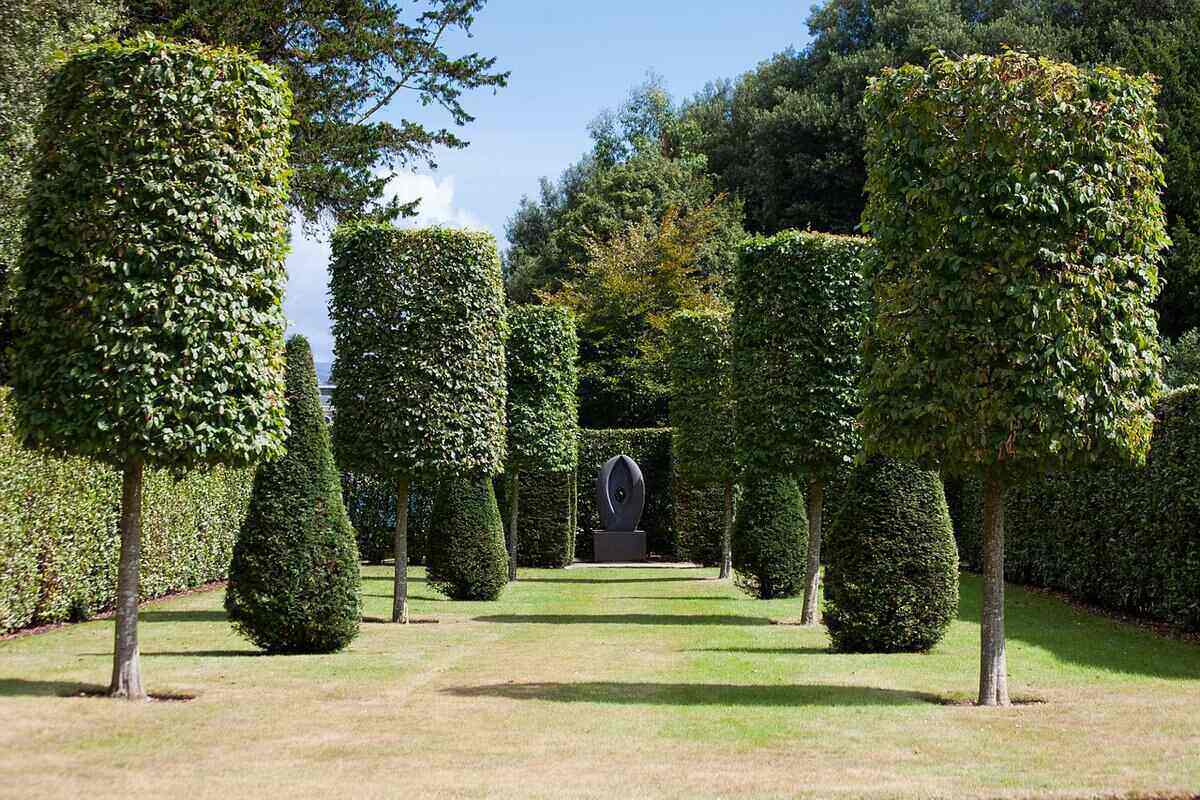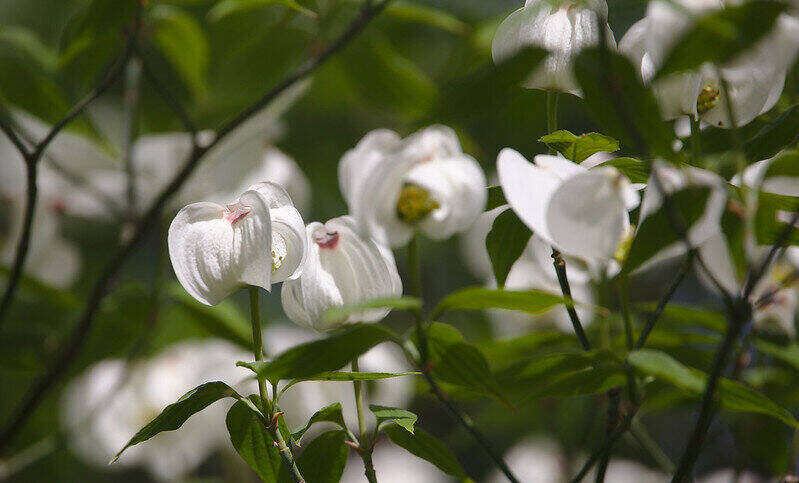
Ever heard the phrase, “Timing is everything”? Well, when it comes to trimming your bushes and trees, truer words have never been spoken. Trimming at the right time is the first step to having healthy shrubs and trees. To understand when to trim bushes and trees, you need to consider the type of plant and purpose of the trim.
Cuts you can make any time of year
DIY trimming can be intimidating for many homeowners, but here are a few cuts you can’t mess up. Remember the three Ds: dead, damaged, or diseased. If you have dead branches, limbs that are damaged (by a storm, for example), or branches that are showing signs of disease, you can remove these limbs any time of year.
When to trim based on the type of bush or tree
You can trim most plants in late winter or early spring. However, you will get the best results if you adjust your timing based on the type of bush or tree.
Flowering bushes (evergreen or deciduous)

To determine the best time to trim flowering bushes, ask yourself this question: When does it bloom? If it blooms in spring, trim the bush right after it stops flowering. If it blooms in summer, wait and trim it in late winter or early spring before it starts to put on new growth.
Bushes that bloom in spring
Trim these right after they finish flowering. Soon after these bushes flower, they set blooms for the next year. These plants flower on “old wood” rather than “new wood” or growth. If you prune at the wrong time (too late in the growing season), you’ll cut off all of next year’s beautiful blooms.
Here are some spring-flowering bushes:
- Forsythia
- Mock orange
- Lilac
- Deutzia
- Flowering quince
- Rhododendron
- Viburnum
- Rambling or climbing roses (certain species)
- Azaleas
*Some ornamental plants like late-blooming azaleas and the oakleaf hydrangea are considered summer bloomers. However, they should still be pruned after they bloom in the summer because they’ll set buds soon after.
Bushes that bloom in summer
Trim these before they start to grow (late winter or early spring). These bushes will put on new blooms soon after they start growing in late spring. This is known as flowering on “new wood,” so it’s important to trim them before they put on new spring growth.
Here are some summer-flowering bushes:
- Rose of Sharon (Althea)
- Glossy abelia
- Anthony Waterer spirea
- Glossy abelia
- Butterfly bush
- Sweetshrub
- Tea Olive
- Japanese spirea
- Floribunda roses and most shrub roses
Deciduous bushes
Blooms aren’t always the star of the show. If your shrub’s best feature is its foliage or bark, you don’t have to worry as much about removing budding branches. The best time to trim non-flowering deciduous bushes is in late winter or early spring.
Avoid trimming deciduous bushes in late summer or fall. You could encourage new growth that can’t handle the upcoming frost. If it dies or is damaged, you’ll have to cut these new branches off.
Evergreen bushes

When most people think of evergreens, they think of the needles and cones typical of conifers. However, there are two types of evergreen plants: broad-leaved evergreens and narrow-leaved evergreens. The best time for trimming evergreen shrubs depends on which category it falls in.
Broad-leaved evergreen bushes
Trim these broad-leaved evergreen bushes in early spring to remove old branches and dead growth. Shape the plants in spring and early summer. If they flower, wait until after they’ve bloomed. Broad-leaf evergreens require only light thinning or shaping cuts to keep them healthy.
Don’t trim in late summer, as it could encourage new growth that won’t be strong enough to survive the cold.
Here are some board-leaf evergreen shrubs:
- Boxwood*
- Rhododendron
- Holly**
- Pyracantha**
- Photinias
*Boxwood is popular for hedges. To maintain the formal hedges’ shape, you may prune them two to four times during the growing season.
**Holly and pyracantha are known for their showy fruit in late fall and winter. They can handle light thinning and shaping in the dormant winter months.
Narrow-leaved evergreen bushes
Trim these narrow-leaved evergreen bushes in early spring before the new growth or mid-summer for light pruning.
Like with other plants, the risk of cold damage is too high in the fall.
Here are some narrow-leaved evergreen shrubs:
- Juniper
- Yew
- Arborvitae
- Hemlock
Berry bushes
Berries are treated similarly to other flowering plants. If you trim branches at the wrong time, you could affect the berry output for the year. To keep your fruiting plants thriving, you generally should prune them after the fruiting season.
For blackberries and raspberries, remove branches after they’ve borne fruit and started to die off.
If you have a new blueberry bush, you can remove flowers and berries so the plant can focus its energy on establishment. Remove a couple of the largest, oldest branches in winter.
Flowering trees

Like flowering shrubs, you have to know when your flowering trees bloom to determine the proper window to prune them.
Trees that bloom in spring
Prune these trees right after they flower.
- Crabapple
- Dogwood
- Bradford pear
- Flowering cherry tree
Trees that bloom in summer
Trim these before they start to grow (late winter or early spring).
- Crape myrtle
- Goldenrain tree
- Sourwood
Deciduous trees

Late winter or early spring also is the best time to trim your deciduous trees, which lose their leaves in the fall (maples, dogwoods, poplars, birch, etc.). Some shade trees like birch, elm, and maple will produce large amounts of sap when cut in winter, but don’t worry — it won’t harm the trees.
According to Iowa State University, oak trees are an exception. The best time to prune oak trees is during the winter months before early spring. Why? In spring and early summer, picnic bugs can spread oak wilt, a lethal fungal disease. If you need to remove branches during spring and summer, cover the wound with latex house paint to serve as a bandage.
Evergreen trees

Evergreen trees don’t require much pruning. In general, late in the dormant season (late winter or early spring) is the best time to trim evergreens if needed, but you can remove branches suffering from the three Ds at any time. If you have flowering broadleaf evergreens, trim them after they flower in spring and remove spent flowers.
If you want your fir, pine, or spruce tree to grow more compact, you will need to trim off half the “candles.” No, we don’t mean scented candles — in this case, it refers to the new growth shoots that appear in spring and unfurl into more needles. You must trim these tips before the needles develop.
If you’re having problems because your large evergreen tree has outgrown its space, don’t focus on pruning. Research the normal growth pattern for your species. If it’s growing as it should, you’ll likely need to remove the tree and find it a new home.
Fruit trees

There are two main types of pruning for fruit trees: dormant and summer pruning. Dormant pruning is done in late winter or early spring after the threat of frost has passed. Summer pruning is best done in early to mid-summer, as late summer trimmings could leave your fruit trees susceptible to cold damage.
Although two prunings are possible, some climates and trees are better suited for one season over the other. Another caveat: The age of your tree also determines when and how you’ll need to prune. Here are some general guidelines:
- Apple trees: Complete major pruning in the winter.
- Pear trees: Prune in late winter or early spring after the last frost.
- Fig trees: Remove unwanted shoots in late winter or early spring.
- Peach trees: Prune in early spring after the last frost and before spring growth.
- Pomegranate trees: Complete major pruning in winter before the buds break and minor sucker pruning in summer. A tree sucker is a small branch growing out from the base of the tree.
Remember, for every rule, there is an exception, and if you need to prune your fruit trees, the best advice is local advice. Check with your state’s Cooperative Extension service to learn the recommended pruning times for the types of trees in your state.
Tools needed for trimming

Since you can cut the three Ds any time of year, make sure your tools are always ready to go. Keeping them sharp and clean is the most important thing you can do to ensure your pruning is successful. Dull and unclean tools can cause damage, slow down healing, and spread disease from tree to tree.
You can file your blades yourself or take them to a shop. Use rubbing alcohol or a diluted bleach solution to clean your pruning tools between trees or after you make pruning cuts on a diseased branch. When you’re all done, oil your tools so they’ll be corrosion-free the next time you need them.
Common trimming tools include:
- Pruning saw
- Bypass pruners
- Bypass snips
- Bypass lopper
- Hand shears
- Pole pruners
- Pole saw
- Hedge shears
- Chainsaw
- Electric hedge trimmer
- Anvil pruner
Oh, and don’t forget your ladder and safety gear. Tall trees, falling branches, and sharp tools all pose danger without the proper precautions, such as:
- Safety glasses
- Face shield
- Gloves
- Hearing protection (for electric tools)
- Chainsaw chaps
- Protective footwear
- Hard hat
FAQ about when to trim bushes and trees
What happens if you prune at the wrong time?
It depends on the extent and purpose of the pruning. There is no wrong time to remove dead, damaged, or diseased branches. However, pruning plants at the wrong time can affect flowering, fruit production, shape, and susceptibility to pests or diseases. Winter pruning is especially risky because of cold damage.
Some negative effects of pruning, such as reduced flowering and fruiting, may last a few years before the plant can recover. However, more severe consequences like cold damage and disease could kill the plant entirely. Because of this, it’s essential to follow proper pruning techniques.
Is pruning necessary?
It depends on the purpose of the trimming. It’s often necessary to remove damaged, diseased, or dead branches to keep your plant healthy.
You also should trim branches that threaten the safety of your home, property, and loved ones. Not only can branches fall on cars or roofs, but they can spread fire. To make your landscape more fire-resistant, remove branches that hang over your roof or touch walls, fencing, or other plants.
Though not strictly necessary, many homeowners trim bushes and trees for aesthetic reasons or convenience. An overgrown bush or tree could appear unsightly or block pathways around your home. Trimming also can bring out the best in your plant so it can reach its full fruiting or flowering potential.
How much does tree and bush trimming cost?
The average tree trimming service costs $255 to $655. The average bush trimming costs $6 to $15 per bush or $50 to $75 per hour.
How arborists and landscapers can help
Sometimes the scope of work is just too overwhelming to handle on your own. If you need to remove large branches or an entire plant, contact an arborist for assistance. They also can provide local plant care recommendations and help you identify serious issues such as disease, stunted growth, or cold damage.
If you dread pruning each year, let a local gardening pro take the chore off your hands. They will trim your to-do list and your plants so they’ll stay healthy year-round.
Main Photo Credit: Pixabay